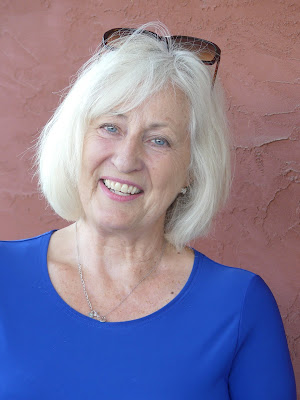Photo: Graham and Lyndsay O'Rourke
At the Judgment of B.C. tasting a year ago, Tightrope Winery’s
2016 Syrah was chosen at the top red wine.
Tightrope is a winery that relies on Naramata Bench grapes.
The big award-winning Syrahs usually have come from Oliver and Osoyoos
vineyards. But judging from that tasting and from the recently released 2018
Syrah from Tightrope, great Syrah can also come from other terroirs.
It is worth recalling that the Okanagan’s first Syrah was actually
planted at the north end of the Naramata Bench by Nichol Vineyard about 1990.
Given a good site and good viticulture, the varietal can succeed here as well
as in hotter locations.
For more background on Tightrope, here is an excerpt from Okanagan
Wine Tour Guide which I released in April, along with co-author Luke
Whittall.
The seed for Tightrope Winery was planted in the decade that
Lyndsay and Graham O’Rourke spent working in bars and restaurants at the
Whistler ski resort. The jobs supported their skiing, Graham’s fly-fishing, and
their shared meals in fine restaurants.
“The thing about Whistler is that you get spoiled
because there are so many fine dining restaurants for such a small town,”
Lyndsay says. “You get a lot of chances to go out and try nice wines with good
food.” Graham agrees. “My wine experience all started with really good wine,”
he says. “I did not grow up drinking Baby Duck and the box wines.”
Both were born in 1971. Lyndsay, whose geologist
father, Grenville Thomas, is a diamond explorer who is in the Canadian Mining
Hall of Fame, has a University of Windsor business degree. Graham, the son of
an accountant, grew up near Sarnia and learned to fish during summers in a
family cottage on the river. His love of the outdoors led to a University of
British Columbia degree in wildlife management.
They moved to the Okanagan in 2003. Immediately
drawn to the vineyard lifestyle, they both took Okanagan College courses in
grape growing and winemaking. To further improve their skills, they went to
Lincoln University in New Zealand for honours degrees in those disciplines. The
studies paid off quickly. When they returned, Graham joined Mission Hill for
six years as a vineyard manager before, with a partner, setting up his own
vineyard-consulting firm. Lyndsay became the winemaker for Ruby Blues Winery
for several years before devoting herself totally to Tightrope.
In 2007, the couple bought a 10-acre Naramata Bench
property with a million-dollar view over the lake. They planted seven acres) of
grapes—Pinot Gris, Riesling, Viognier, Pinot Noir, and Merlot, with small
blocks of Cabernet Franc and Barbera. They made the first 900 cases of
Tightrope wines in 2012, using the Ruby Blues winery until they built their own
in 2014.
On the
winery’s Facebook page, they set out the rationale for the winery’s name: “The
journey of bringing grapes to the bottle is a tightrope walk of variables from
vineyard management, to winemaking, to the weather and even balancing the
cheque book. Please enjoy the final culmination of our balancing act!”
Here are notes on current releases from Tightrope.
Tightrope Riesling 2018 ($21 for
432 cases). This is an excellent estate-grown dry Riesling. It begins with
aromas of citrus and apple, leading to flavours of lemon and green apple, with
a whiff of petrol. The acidity is bright but is well-balanced with a modest
amount of residual sugar. 91.
 Tightrope Chardonnay 2018 ($28 for
214 cases).
Tightrope Chardonnay 2018 ($28 for
214 cases).
This wine was fermented in barrel (both French oak and stainless
steel barrels) and aged on the lees for seven months. Only a third of the wine
was allowed to go through malolactic fermentation. The result is a vibrant,
fruit-forward Chardonnay with aromas of citrus and apple, followed by flavours
of apple, stone fruit, vanilla and butter. The mid-palate texture is creamy (thanks
to the time on the lees) while the finish is crisp. 91.
Tightrope Pinot Noir 2018 Fleet Road Vineyards ($31 for
662 cases). This wine was fermented with wild yeast in stainless steel, with a
total of about 21 days of skin contact. It was then aged 10 months in French
oak (30% new). The wine begins with aromas of cherry and strawberry which are
echoed on the palate. There are earthy “forest floor” notes on the finish. The
tannins are still firm. 89.

Tightrope Pinot Noir 2018 Rubis Family Vineyard ($32 for
302 cases).
The fruit is from a young Naramata Bench vineyard. The wine was
fermented with wild yeast in stainless steel and aged 10 months in French oak
(30% new). This is a vibrant and charming Pinot Noir with aromas and flavours of
cherry and strawberry mingled with spice and vanilla on the finish. The tannins
are supple. 92.
Tightrope Cabernet Franc 2018 ($28 for
309 cases). As I often do, I left half a bottle of wine overnight for retasting,
as a measure of the age-ability of the wine. This Cabernet Franc passed with
flying colours. Put away a few bottles for several more years and let the wine
achieve its full potential. It begins with brambly aromas (black currant
mingled with cherry). On the palate, there are flavours of black currant and
blackberry mingled with leather and chocolate. 90.
Tightrope
Syrah 2018 ($34
for 342 cases). The fruit for this wine was grown on the Naramata Bench. It was
fermented in small lots in stainless steel and was then aged in oak
barrels
(mostly French) for 12 months. The wine begins with aromas of black pepper mingled
with violets and blueberry. On the palate there are flavours of plum and fig
with notes of pepper and leather. 92.










































